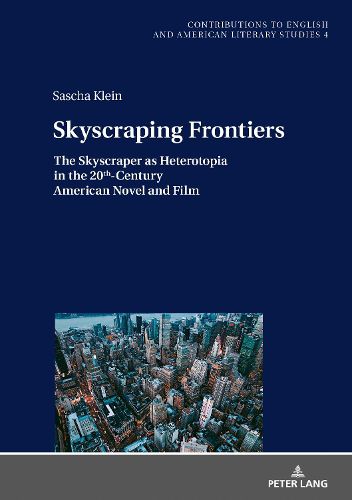Readings Newsletter
Become a Readings Member to make your shopping experience even easier.
Sign in or sign up for free!
You’re not far away from qualifying for FREE standard shipping within Australia
You’ve qualified for FREE standard shipping within Australia
The cart is loading…






This title is printed to order. This book may have been self-published. If so, we cannot guarantee the quality of the content. In the main most books will have gone through the editing process however some may not. We therefore suggest that you be aware of this before ordering this book. If in doubt check either the author or publisher’s details as we are unable to accept any returns unless they are faulty. Please contact us if you have any questions.
As a space of extremes, the skyscraper has been continually constructed as an urban frontier in American cultural productions. Like its counterpart of the American wilderness, this vertical frontier serves as a privileged site for both subversion and excessive control. Beyond common metaphoric readings, this study models the skyscraper not only as a Foucauldian heterotopia, but also as a complex network of human and nonhuman actors while retracing its development from its initial assemblage during the 19th century to its steady evolution into a smart structure from the mid-20th century onward. It takes a close look at US-American literary and filmic fictions and the ways in which they sought to make sense of this extraordinary structure throughout the 20th and early 21st centuries. More traditional poststructuralist spatial theories are connected with concepts and methods of Actor-Network Theory in a compelling account of the skyscraper’s evolution as reflected in fictional media from early 20th-century short stories via a range of action, disaster and horror films to selected city novels of the 1990s and 2000s.
$9.00 standard shipping within Australia
FREE standard shipping within Australia for orders over $100.00
Express & International shipping calculated at checkout
This title is printed to order. This book may have been self-published. If so, we cannot guarantee the quality of the content. In the main most books will have gone through the editing process however some may not. We therefore suggest that you be aware of this before ordering this book. If in doubt check either the author or publisher’s details as we are unable to accept any returns unless they are faulty. Please contact us if you have any questions.
As a space of extremes, the skyscraper has been continually constructed as an urban frontier in American cultural productions. Like its counterpart of the American wilderness, this vertical frontier serves as a privileged site for both subversion and excessive control. Beyond common metaphoric readings, this study models the skyscraper not only as a Foucauldian heterotopia, but also as a complex network of human and nonhuman actors while retracing its development from its initial assemblage during the 19th century to its steady evolution into a smart structure from the mid-20th century onward. It takes a close look at US-American literary and filmic fictions and the ways in which they sought to make sense of this extraordinary structure throughout the 20th and early 21st centuries. More traditional poststructuralist spatial theories are connected with concepts and methods of Actor-Network Theory in a compelling account of the skyscraper’s evolution as reflected in fictional media from early 20th-century short stories via a range of action, disaster and horror films to selected city novels of the 1990s and 2000s.